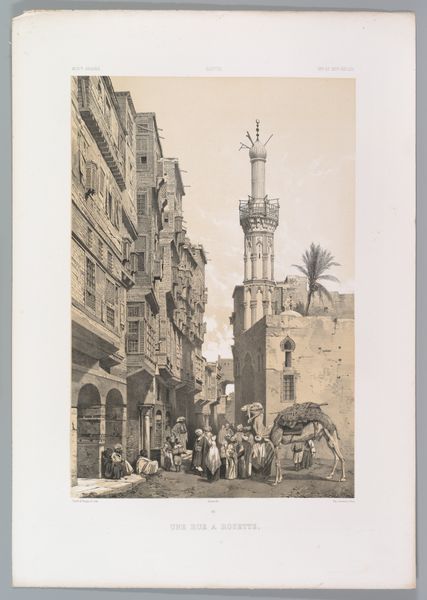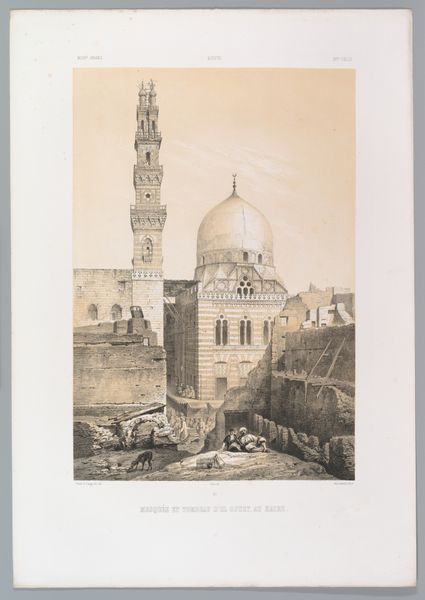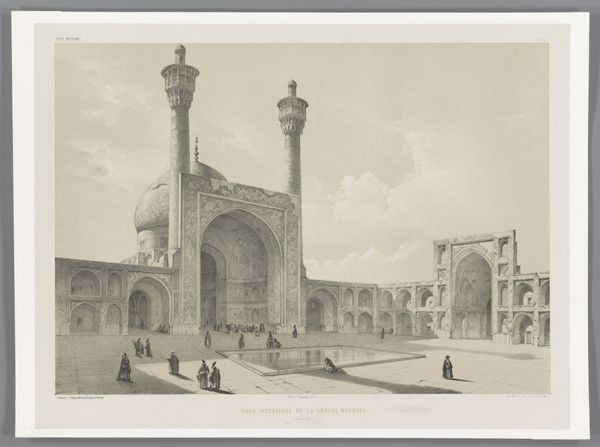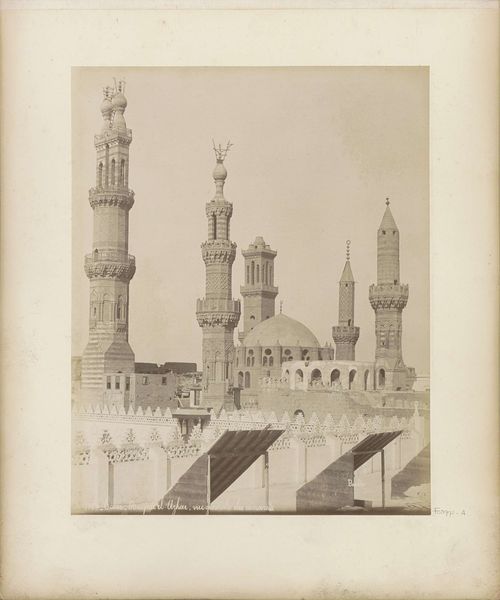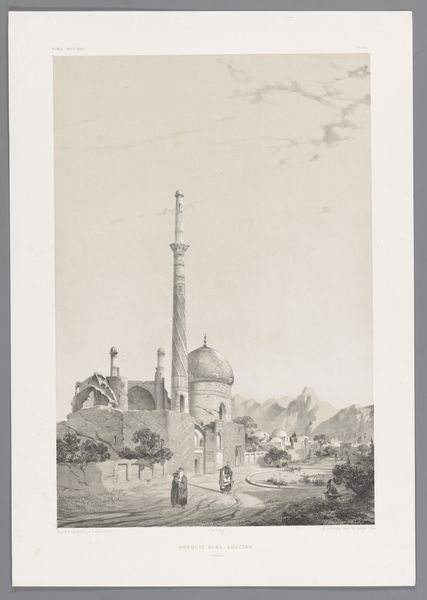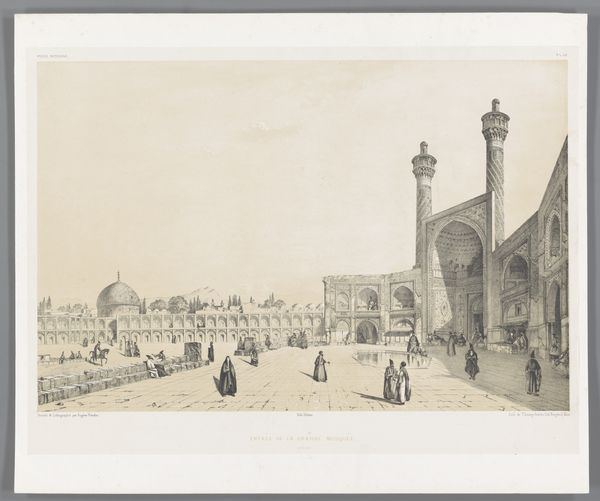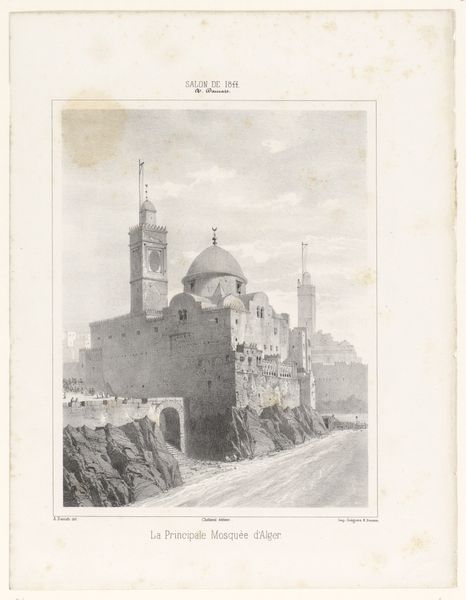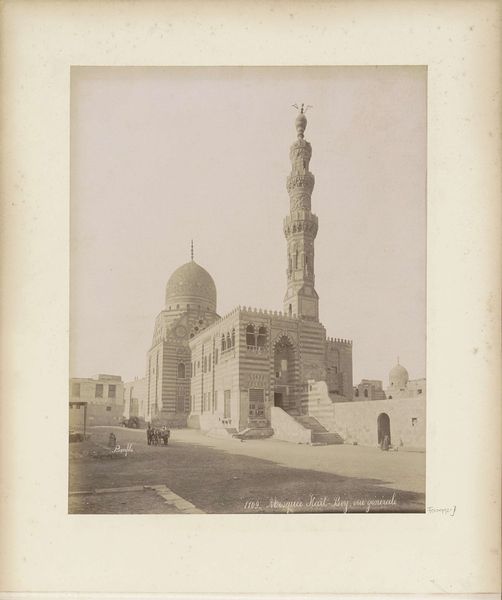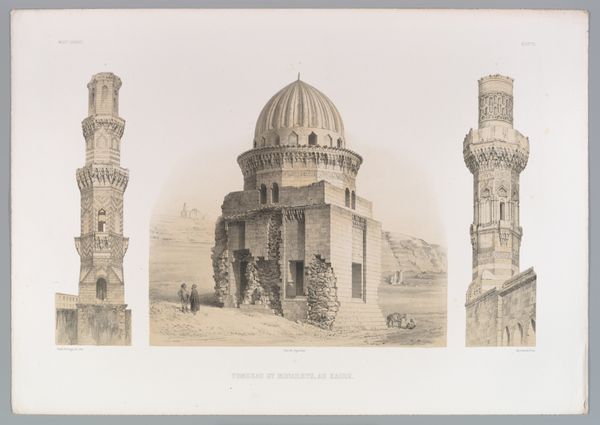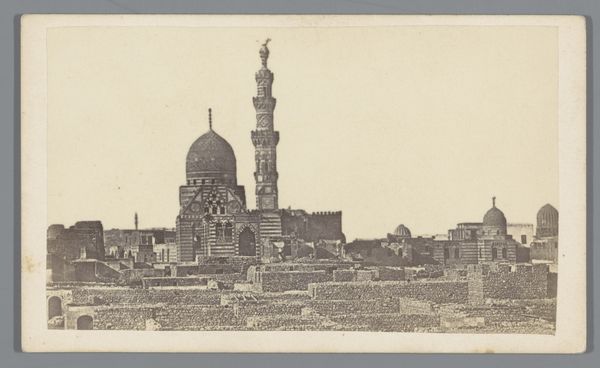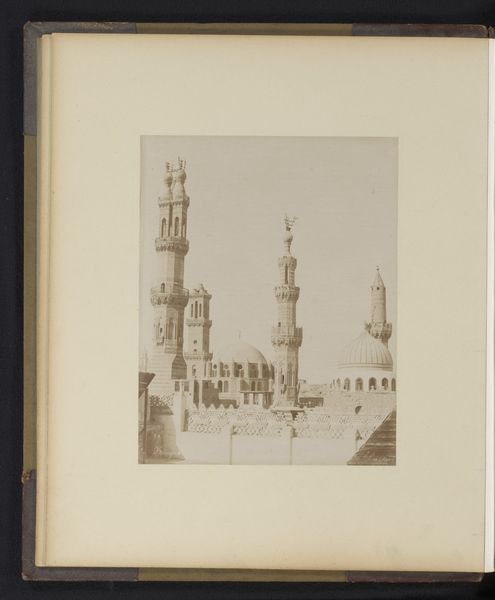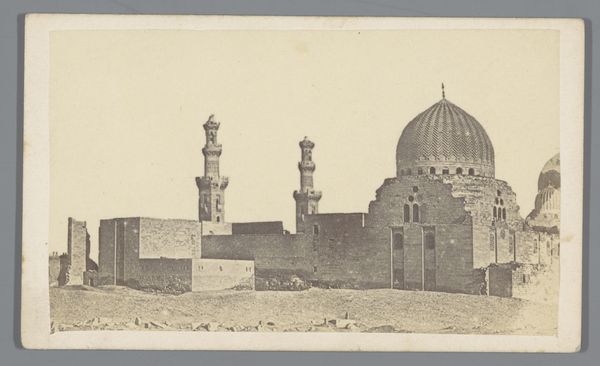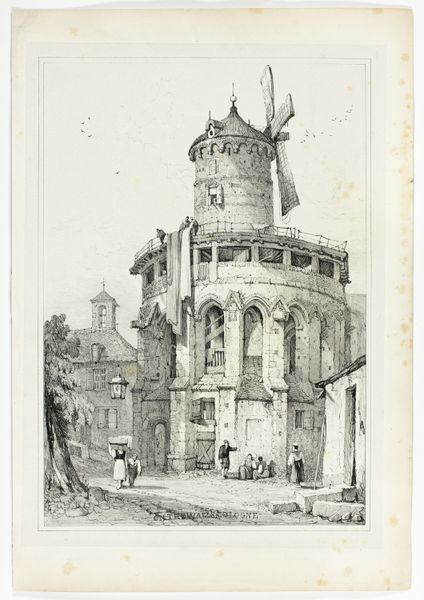
print, etching
# print
#
etching
#
landscape
#
cityscape
#
islamic-art
Dimensions: Sheet: 22 3/8 × 15 5/8 in. (56.9 × 39.7 cm)
Copyright: Public Domain
Curator: Looking at this etching from 1843 by Joseph-Philibert Girault de Prangey, titled "Mosquée, au Kaire," currently residing at the Metropolitan Museum of Art, I immediately sense a certain quietude amidst what is clearly a bustling urban scene. What's your initial read? Editor: The tonality strikes me first. It's a monochrome world rendered with a stark realism, devoid of sentimentality yet hinting at the colonial gaze that shaped the artist's perception. Curator: Exactly. This piece isn't merely a visual document; it's an artifact deeply entrenched in the Orientalist movement of the 19th century. The meticulous detail, the careful rendering of the architectural grandeur alongside the seemingly 'exotic' local population... It all constructs a very particular narrative. We have to ask whose Cairo are we seeing? Editor: Indeed. The etching medium itself adds to that layer, lending a clinical, almost scientific quality to the depiction. One wonders, what social conditions enable Prangey, a Western artist, to set up his easel in Cairo at this specific moment in history, and to present the everyday interactions he portrays? How is power manifest here? Curator: Furthermore, the way Prangey frames the mosque within the wider cityscape hints at how Western perceptions might have positioned Islamic architecture against an image of supposed urban chaos. Is he trying to offer a commentary on modernity versus tradition, order versus disorder? Editor: Or perhaps unintentionally revealing more about the assumptions and preoccupations of his own culture? The shadows here become particularly loaded. We can question what Prangey leaves in darkness as well as in the light. It's this kind of visual rhetoric we need to address when confronting such historical representations. Curator: I agree. It serves as a powerful reminder of the layers of meaning embedded within artworks that often get overlooked. It requires constant deconstruction, in other words. Editor: Absolutely. Ultimately, "Mosquée, au Kaire" urges us to think critically about the role of images in perpetuating and challenging power structures, then and now. Curator: A valuable lens through which to view history.
Comments
No comments
Be the first to comment and join the conversation on the ultimate creative platform.
